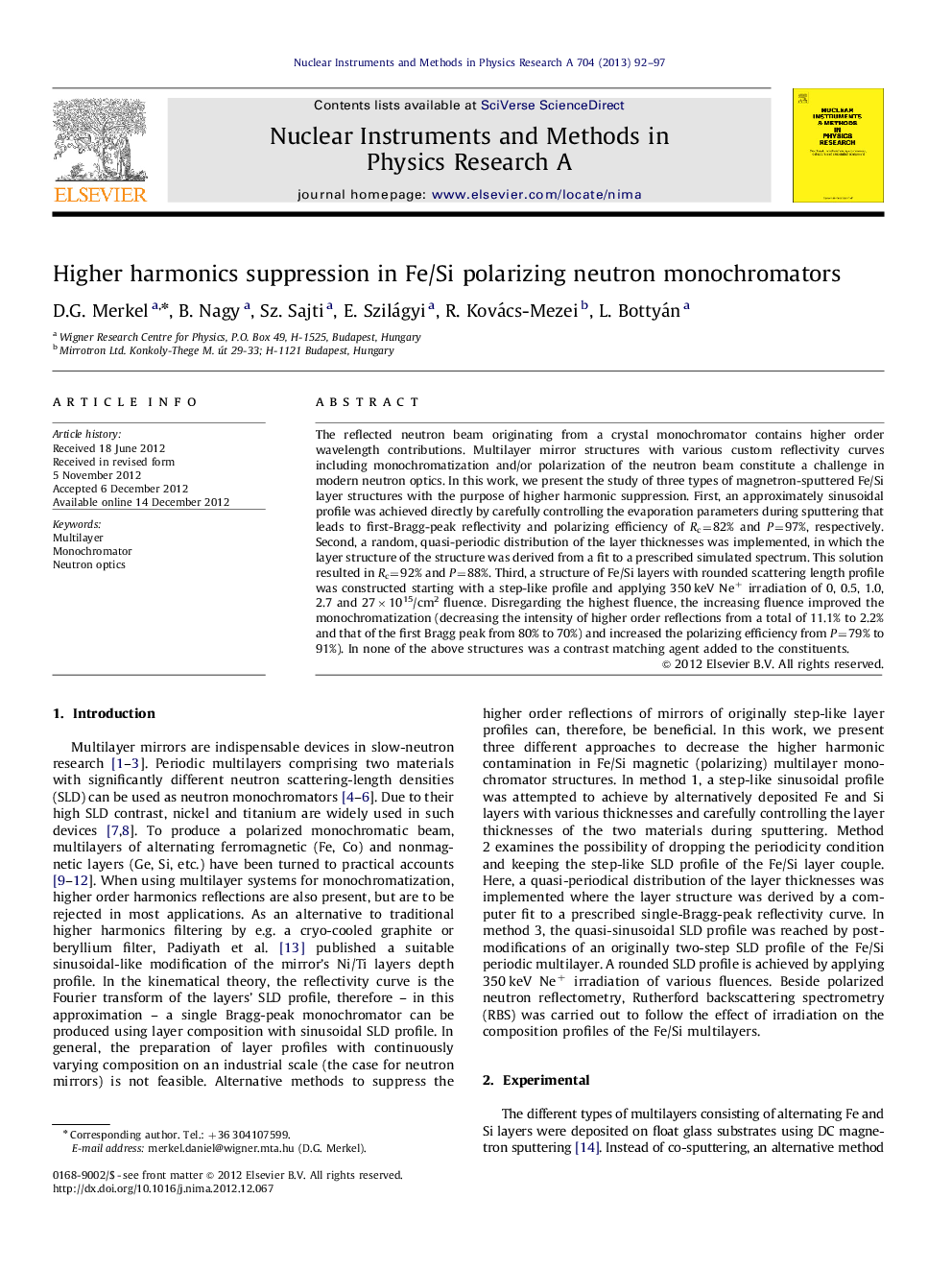| Article ID | Journal | Published Year | Pages | File Type |
|---|---|---|---|---|
| 1823286 | Nuclear Instruments and Methods in Physics Research Section A: Accelerators, Spectrometers, Detectors and Associated Equipment | 2013 | 6 Pages |
The reflected neutron beam originating from a crystal monochromator contains higher order wavelength contributions. Multilayer mirror structures with various custom reflectivity curves including monochromatization and/or polarization of the neutron beam constitute a challenge in modern neutron optics. In this work, we present the study of three types of magnetron-sputtered Fe/Si layer structures with the purpose of higher harmonic suppression. First, an approximately sinusoidal profile was achieved directly by carefully controlling the evaporation parameters during sputtering that leads to first-Bragg-peak reflectivity and polarizing efficiency of Rc=82% and P=97%, respectively. Second, a random, quasi-periodic distribution of the layer thicknesses was implemented, in which the layer structure of the structure was derived from a fit to a prescribed simulated spectrum. This solution resulted in Rc=92% and P=88%. Third, a structure of Fe/Si layers with rounded scattering length profile was constructed starting with a step-like profile and applying 350 keV Ne+ irradiation of 0, 0.5, 1.0, 2.7 and 27×1015/cm2 fluence. Disregarding the highest fluence, the increasing fluence improved the monochromatization (decreasing the intensity of higher order reflections from a total of 11.1% to 2.2% and that of the first Bragg peak from 80% to 70%) and increased the polarizing efficiency from P=79% to 91%). In none of the above structures was a contrast matching agent added to the constituents.
